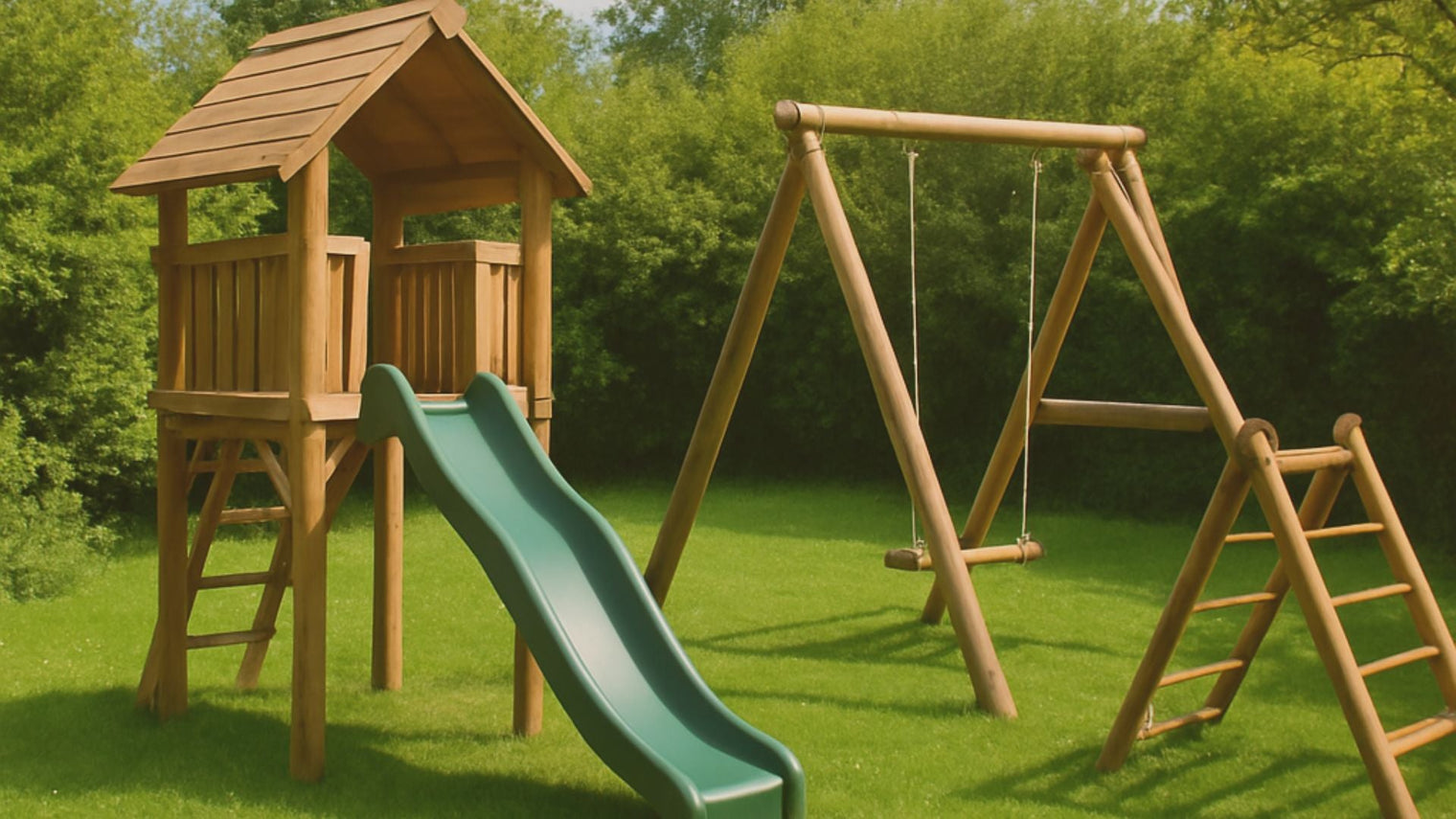Children learn best through play — not just indoors but outdoors, where they can touch, climb, and explore freely.
A Montessori-inspired outdoor play space takes this natural curiosity and turns it into meaningful growth.
It’s not just a backyard or playground; it’s an environment that encourages independence, imagination, and confidence.
As more parents look for ways to help their children disconnect from screens and reconnect with nature, creating a Montessori outdoor play space has become both a trend and a need.
At Dannico Woodworks, we believe every child deserves a space where learning happens naturally — through movement, discovery, and freedom.
If you’re thinking of transforming your backyard, school yard, or play area into a child-led learning zone, this guide will walk you through how to do it thoughtfully and practically.

Natural Materials and Environment
One of the fundamental principles of Montessori is the use of natural materials. In your outdoor play space, prioritize elements like wood, stone, sand, and plants.
These materials are not only aesthetically pleasing but also offer a variety of textures and sensory experiences that are crucial for child development.
Consider incorporating features like a wooden sandbox, a stone pathway, or a small garden where children can plant flowers or vegetables. These elements encourage hands-on learning and a deeper connection with nature.
Open-Ended Play Opportunities
In a Montessori play area, the focus is on open-ended play, where children can use their imagination and creativity without restrictions.
Provide a variety of loose parts, such as sticks, stones, and fabric, that children can manipulate and use in multiple ways. This type of play fosters problem-solving skills and independence.
Child-Sized Furniture and Equipment
To promote autonomy, ensure that all furniture and play equipment are child-sized.
This includes tables, chairs, and any other fixtures in the play space.
When children can easily access and use their environment, they feel empowered and confident in their abilities.
 Designing the Layout
Designing the Layout
Zones for Different Activities
A well-designed Montessori outdoor play space should include distinct zones for various activities. These might include:
- A Quiet Zone: A peaceful area with comfortable seating or a hammock where children can relax, read, or observe nature.
- An Active Zone: A space for physical activities like climbing, running, or balancing. Consider installing a climbing structure or balance beams made from logs.
- A Creative Zone: An area dedicated to artistic expression, such as a chalkboard wall or a space for painting and crafts.
Safety Considerations
While encouraging exploration and independence, safety must remain a top priority. Ensure that all structures are stable and free from sharp edges.
Use non-toxic finishes on wood and other materials, and regularly inspect the play area for potential hazards.
Accessibility and Flow
The layout should facilitate easy movement between different zones.
Paths should be clear and accessible, allowing children to navigate the space without obstacles.
Consider the flow of activities and how children will interact with each area.
Incorporating Nature
Gardening and Plant Care
Gardening is a fantastic way to teach children about responsibility and the life cycle of plants.
Set up a small garden where children can plant seeds, water plants, and observe growth over time.
This hands-on experience fosters a sense of responsibility and curiosity about the natural world.
Wildlife and Exploration
Encourage children to explore and observe local wildlife by creating habitats that attract birds, insects, and other creatures.
This could include bird feeders, butterfly gardens, or a small pond. These features provide endless opportunities for observation and learning.
Tools and Resources for Montessori Outdoor Play
Selecting the Right Tools
Provide children with real, child-sized tools for gardening and exploration. These might include small shovels, rakes, and watering cans. Using real tools helps children develop fine motor skills and a sense of competence.
Educational Resources
Incorporate educational resources that align with Montessori principles, such as magnifying glasses for observing insects or field guides for identifying plants and animals.
These tools enhance the learning experience and encourage further exploration.
Tips for Maintaining the Space
Regular Maintenance
To keep your Montessori outdoor play space safe and inviting, regular maintenance is essential.
This includes checking for and addressing any wear and tear on structures, ensuring plants are healthy, and keeping the space clean and organized.
Involving Children in Care
Encourage children to take part in maintaining the play area. This could involve watering plants, tidying up loose parts, or helping with minor repairs.
Involving children in the care of their environment teaches responsibility and respect for their surroundings.
FAQs
How big should a Montessori outdoor space be?
Size doesn’t matter as much as intentional design. Even a small patio can be turned into a Montessori-inspired area with planters, water play, and a reading corner.
Can Montessori outdoor spaces work in urban homes or apartments?
Absolutely. You can use balconies or rooftop gardens to introduce elements like sensory bins, small planters, and portable wooden furniture.
How can I keep outdoor wooden furniture safe from the weather?
Choose high-quality, weather-resistant finishes. At Dannico Woodworks, our furniture is made from durable hardwoods and treated to withstand outdoor use while maintaining a natural look.
Conclusion
Designing a Montessori outdoor play space is about giving your child more than just a place to play — it’s about giving them freedom, responsibility, and a deep connection to the world around them.
With thoughtful design, natural materials, and child-centered furniture, you can create an environment that nurtures confidence, curiosity, and calm.
At Dannico Woodworks, we’re here to help you make that vision real — with handcrafted, durable furniture that supports both play and learning.
So, what’s the first thing your child would build, plant, or discover in their own Montessori-inspired outdoor space?

